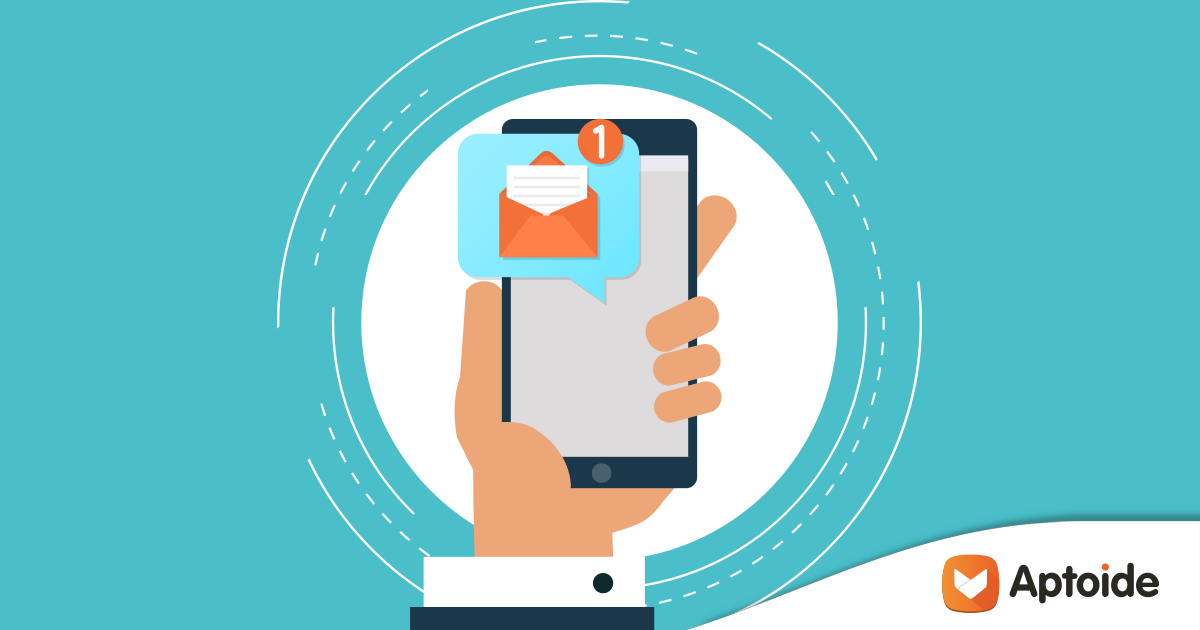A couple of weeks ago, we talked about the challenges developers face in the modern app ecosystem, and how alternative app stores can help overcome them. However, getting people to download their apps is just the first in a long line of obstacles developers must face to be successful in a mature app market.
As a user, there is such a vast number of apps to choose from and try, and the related attention span for each one is so small, that app engagement quickly becomes a problem. In fact, Localytics reports that the average retention rate is 35% for 30 days, and 20% for 90 days. For a developer, this means that, even if a user finds your app, likes what he sees and chooses to try it out, 4 out of 5 will no longer have your app installed in 3 months. Shocking.
It then becomes just as important to invest in user retention as it is to invest in user acquisition. One of the most useful tools at a developer’s reach to increase retention is Push Notifications, which is why we're here.
Building a successful Push Notification strategy is an art, some might say, and there really is no substitute for experimenting until you find out what works for your audience.
Here are some best practices that, in our experience, can make a tangible difference in how your users engage with your push notifications, and consequently, your app:
**1.** **Timing matters** – The **purpose of Push Notifications is**, primarily, to **build engagement**. But if we’re not careful, it might generate the opposite. A [Localytics survey](http://info.localytics.com/blog/the-inside-view-how-consumers-really-feel-about-push-notifications) found that, when receiving 2-5 push notifications from the same app in a single week, 46% of users would opt-out of Push Notifications, and 32% would stop using the app altogether when receiving 6-10. It further states that **open rates are highest for users who receive weekly notifications**.
2. Not all hours work the same too. Research indicates significant differences in open rates depending on what time of day it is. Users tend to be more agreeable to Push Notifications around lunchtime than in the afternoon, for example. A lesson we ourselves learned the hard way…
3. Segment your users – This one seems obvious, but it can really make or break your Push Notifications, so it bears repeating: The more relevant the message to the end user, the higher the change they’ll open it. Therefore, it pays to send push notifications to the users you believe are more likely to benefit/identify with what you’re saying or offering.
Case in point: previous in-app actions. Looking at what users do inside the app is probably the best indicator of their preferences. Which is why we at Aptoide pay special attention to the customer journey of users once they open our app. By identifying groups of users by their behaviour, we’ve been able to target our notifications and get a 100% increase in open rate.
Of course, correctly segmenting your users and knowing when to send notifications takes a lot of trials, and lot of errors. Which brings us to our last point.
4. A/B Test Everything – Whether it be copy, length, time of day, user segments, etc, be sure to test every element of your notifications, and keep optimizing it until you hit your sweet spot. The more (tests), the merrier. We’ve experienced 50% increase in open rate in some tests simply by changing the beginning of a sentence!
Effective Push Notifications take time to master, and ultimately, each developer must find what works best for their specific user base, meaning there are no “magic wand” solutions that will work for everyone. But they are a very powerful tool to increase app engagement, and, frankly, quite a lot of fun!
